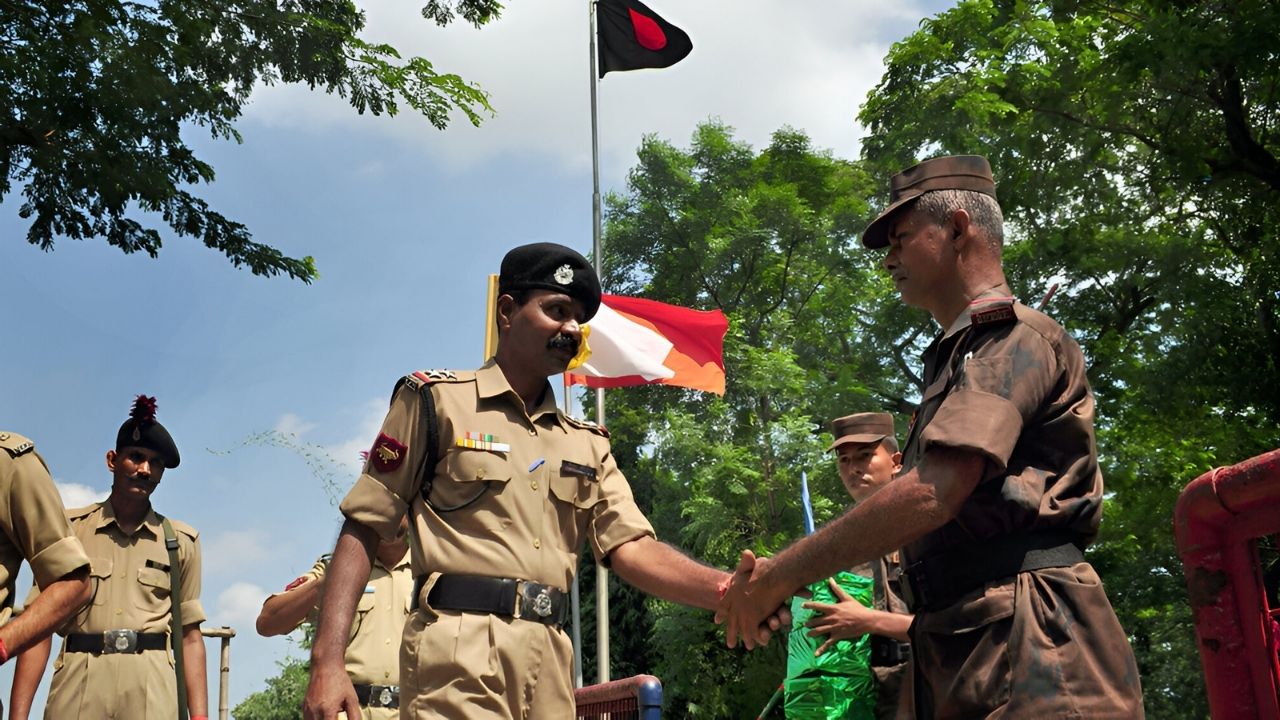
Why do Bangladesh–India border clashes happen? The Bangladesh–India border stretches over 4,000 kilometers, making it one of the longest borders in the world. This extensive boundary has seen numerous clashes due to various reasons. Illegal immigration is a significant issue, with many people crossing the border in search of better opportunities. Smuggling of goods, especially cattle, also fuels tensions. Additionally, territorial disputes over specific areas, like the enclaves and adverse possessions, contribute to the conflicts. Both nations have taken steps to manage these issues, but the complex history and socio-economic factors continue to make the border a hotspot for clashes.
Key Takeaways:
- The Bangladesh–India border clashes have a long history dating back to the partition of British India in 1947, leading to territorial disputes and security concerns.
- Despite the conflicts, both countries are making efforts to resolve their differences through diplomacy, aiming to foster better relations and reduce border tensions for the future.
Historical Context
Understanding the Bangladesh–India border clashes requires a look back at the history between these two nations. The border, stretching over 4,000 kilometers, has seen its share of conflicts since the partition of British India in 1947.
- The Radcliffe Line, drawn in 1947, demarcated the borders between India and Pakistan, which included present-day Bangladesh.
- Bangladesh gained independence from Pakistan in 1971, leading to the creation of a new international border with India.
- The border is one of the longest in the world, spanning approximately 4,096 kilometers.
Major Clashes
Several significant clashes have occurred along this extensive border, often involving territorial disputes and security concerns.
- In 2001, a major clash occurred in the Pyrdiwah area, resulting in the deaths of 16 Indian soldiers.
- The 2011 Haripur incident saw a deadly exchange of fire, causing casualties on both sides.
- Border clashes often involve the Border Security Force (BSF) of India and the Border Guards Bangladesh (BGB).
Border Management
Managing such a long and contentious border presents numerous challenges for both countries.
- India has constructed a barbed wire fence along most of the border to prevent illegal immigration and smuggling.
- The border is patrolled by thousands of BSF and BGB personnel, who often engage in joint patrols.
- Both countries have established several border outposts to monitor and control cross-border activities.
Human Impact
The border clashes have profound effects on the lives of people living in the border regions.
- Many families are divided by the border, leading to emotional and logistical challenges.
- Farmers often face difficulties accessing their lands due to the presence of security forces and fencing.
- Cross-border trade and travel are frequently disrupted by clashes and heightened security measures.
Diplomatic Efforts
Despite the clashes, both nations have made efforts to resolve their differences through diplomacy.
- Several high-level meetings have been held between Indian and Bangladeshi officials to address border issues.
- In 2015, the two countries signed the Land Boundary Agreement, resolving several long-standing territorial disputes.
- Joint border management committees have been established to improve coordination and communication.
Smuggling and Illegal Activities
The porous nature of the border has made it a hotspot for various illegal activities.
- Smuggling of goods, including cattle, drugs, and arms, is a significant issue along the border.
- Human trafficking is another major concern, with many victims being transported across the border.
- Both countries have increased surveillance and enforcement efforts to combat these illegal activities.
Environmental Concerns
The border region is home to diverse ecosystems that are often affected by the clashes and security measures.
- The construction of fences and border outposts has led to habitat fragmentation and environmental degradation.
- Wildlife, including endangered species, is often caught in the crossfire or affected by human activities in the border areas.
- Efforts are being made to balance security needs with environmental conservation in the border regions.
Cultural Ties
Despite the conflicts, the people of India and Bangladesh share deep cultural and historical ties.
- Many communities along the border share linguistic, religious, and cultural similarities.
- Festivals and cultural events often see participation from people on both sides of the border.
- Cross-border marriages and familial relationships are common, highlighting the interconnectedness of the border communities.
Future Prospects
Looking ahead, both countries aim to foster better relations and reduce border tensions.
- Continued diplomatic efforts and confidence-building measures are essential for maintaining peace along the border.
Final Thoughts on Bangladesh–India Border Clashes
The Bangladesh–India border clashes have a complex history, marked by disputes over territory, migration, and security. These incidents highlight the need for diplomatic efforts to resolve conflicts and promote peace. Both nations share cultural ties and economic interests, making cooperation essential. Understanding the root causes of these clashes can help in finding long-term solutions.
Efforts to improve border management, enhance communication, and address underlying issues like poverty and migration can reduce tensions. The involvement of international organizations may also play a role in mediating disputes.
Ultimately, fostering mutual respect and understanding between Bangladesh and India is crucial. By focusing on common goals and working together, both countries can create a more stable and prosperous region.
Frequently Asked Questions
Was this page helpful?
Our commitment to delivering trustworthy and engaging content is at the heart of what we do. Each fact on our site is contributed by real users like you, bringing a wealth of diverse insights and information. To ensure the highest standards of accuracy and reliability, our dedicated editors meticulously review each submission. This process guarantees that the facts we share are not only fascinating but also credible. Trust in our commitment to quality and authenticity as you explore and learn with us.
